Books
01.04.13

The Rise and Fall of the House of Bo
When news of the murder trial of prominent Communist Party leader Bo Xilai’s wife reached public attention, it was apparent that, as with many events in the secretive upper echelons of Chinese politics, there was more to the story. Now, during the biggest leadership transition in decades, as the Bo family’s long-time rival Xi Jinping assumes the presidency, China’s rulers are finding it increasingly difficult to keep their poisonous internal divisions behind closed doors.
Bo Xilai’s breathtaking fall from grace is an extraordinary tale of excess, murder, defection, political purges and ideological clashes going back to Mao himself. China watcher John Garnaut examines how Bo’s stellar rise through the ranks troubled his more reformist peers, as he revived anti-“capitalist roader” sentiment, even while his family and associates enjoyed the more open economy’s opportunities.Amid fears his imminent elevation to the powerful Standing Committee was leading China towards another destructive Cultural Revolution, have his opponents seized their chance to destroy Bo and what he stood for? The trigger was his wife Gu Kailai’s apparently paranoid murder of an English family friend, which exposed the corruption and brutality of Bo’s outwardly successful administration of the massive city of Chongqing. It also led to the one of the highest-level attempted defections in Communist China’s history when Bo’s right-hand man, police chief Wang Lijun, tried to escape the ruins of his sponsor’s reputation.
Garnaut explains how this incredible glimpse into the very personal power struggles within the CCP exposes the myth of the unified one-party state. With China approaching super-power status, today’s leadership shuffle may set the tone for international relations for decades. Here, Garnaut reveals a particularly Chinese spin on the old adage that the personal is political.
—Penguin
Books
12.17.12
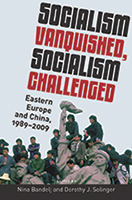
Socialism Vanquished, Socialism Challenged
Socialism Vanquished, Socialism Challenged examines the twenty-year aftermath of the 1989 assaults on established, state-sponsored socialism in the former Soviet bloc and in China. Editors Nina Bandelj and Dorothy J. Solinger bring together prominent experts on Eastern Europe and China to examine the respective trajectories of political, economic, and social transformations that unfolded in these two areas, while also comparing the changes that ensued within the two regions. The volume features paired comparisons, with one chapter on the countries from the former Soviet bloc and one on China for each of the following themes: the reinstitutionalization of politics, the recasting of state-society relations, the reform of economic systems, changes in economic behavior, and transformations of social institutions. Despite differences in the specific substantive focus and disciplinary grounding among individual chapters, all chapters share a concern with the fate of the state in postsocialism. They elaborate on topics such as the transformations of the old socialist state and its nature, activities and roles; civil society before and after 1989; the ways in which the state has, or has not, acted to encourage new forms of economic behavior; and the state's responsibility for societal trends, whether in family formation, in protest or in inequality. Taking a unique approach to understand twentieth-century socialism on a global scale, Socialism Vanquished, Socialism Challenged uncovers insights about political models and economic patterns that have emerged in the grand project of the transition from socialism. —Oxford University Press
Books
12.12.12
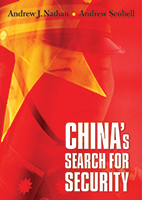
China’s Search for Security
Despite its impressive size and population, economic vitality, and drive to upgrade its military capabilities, China remains a vulnerable nation surrounded by powerful rivals and potential foes. The key to understanding China’s foreign policy is to grasp these geostrategic challenges, which persist even as the country comes to dominate its neighbors. Andrew J. Nathan and Andrew Scobell analyze China’s security concerns on four fronts: at home, with its immediate neighbors, in surrounding regional systems, and in the world beyond Asia. By illuminating the issues driving Chinese policy, they offer new perspective on China’s rise and a strategy for balancing Chinese and American interests in Asia. Though rooted in the present, Nathan and Scobell’s study makes ample use of the past, reaching back into history to contextualize the people and institutions shaping Chinese strategy. They examine Chinese views of the United States; explain why China is so concerned about Japan; and uncover China’s interests in such trouble spots as North Korea, Iran, and the Sudan. The authors probe recent troubles in Tibet and Xinjiang and establish links to forces beyond China’s borders. They consider the tactics deployed by both sides of mainland China and Taiwan’s complicated relationship, as Taiwan seeks to maintain autonomy while China tries to move toward unification, and they evaluate the strengths and weaknesses of China’s three main power resources—economic power, military power, and soft power. The book concludes with recommendations for the United States as it seeks to manage China’s rise. Chinese policymakers understand that the nation’s prosperity, stability, and security depend on cooperation with the U.S, and if handled wisely, relations between the two countries could produce mutually beneficial outcomes in Asia and throughout the world. —Columbia University Press
Books
12.04.12
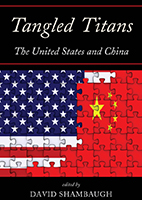
Tangled Titans
Tangled Titans offers a current and comprehensive assessment of the most important relationship in international affairs—that between the United States and China. How the relationship evolves will have a defining impact on the future of world politics, the Asian region, and the citizens of many nations. In this definitive book, leading experts provide an in-depth exploration of the historical, domestic, bilateral, regional, global, and future contexts of this complex relationship. The contributors argue that the relationship is a unique combination of deep interdependence, limited cooperation, and increasing competition. Never in modern history have two great powers been so deeply intertwined—yet so suspicious and potentially antagonistic toward each other. Exploring this cooperative and competitive dynamic, the contributors offer a wealth of detail on contemporary Sino-American relations unavailable elsewhere. Students will find Tangled Titans essential reading to understand the current dynamics and future direction of relations between the world’s two most important powers.—Rowman & Littlefield Publishers
Culture
11.21.12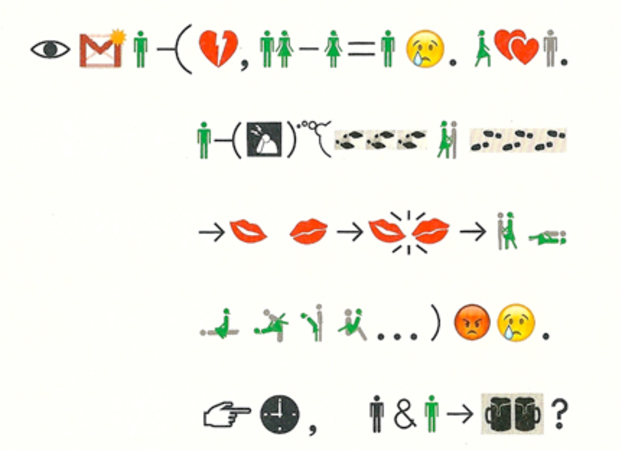
A New Tower of Babel
Xu Bing, the renowned Chinese artist whose many laurels include a MacArthur Foundation “genius” award and an appointment as vice president of China’s Central Academy of Fine Arts, has long demonstrated a fascination with the written word.His...
Books
11.20.12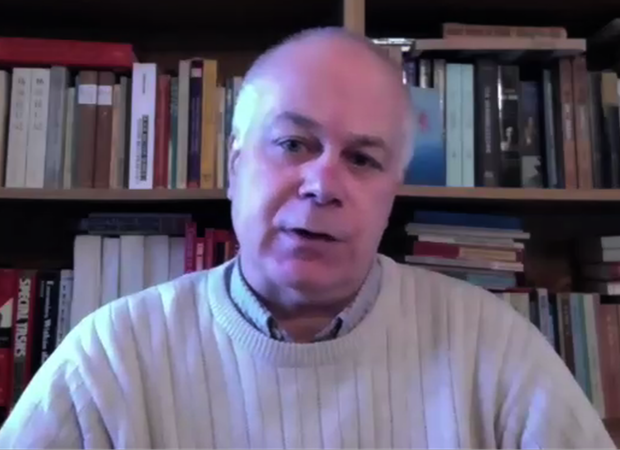
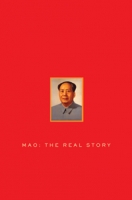
Mao: The Real Story
Mao Zedong was one of the most important figures of the twentieth century, the most important in the history of modern China. A complex figure, he was champion of the poor and brutal tyrant, poet and despot.Pantsov and Levine show Mao’s relentless drive to succeed, vividly describing his growing role in the nascent Communist Party of China. They disclose startling facts about his personal life, particularly regarding his health and his lifelong serial affairs with young women. They portray him as the loyal Stalinist that he was, who never broke with the Soviet Union until after Stalin’s death.Mao brought his country from poverty and economic backwardness into the modern age and onto the world stage. But he was also responsible for an unprecedented loss of life. The disastrous Great Leap Forward with its accompanying famine and the bloody Cultural Revolution were Mao’s creations. Internationally Mao began to distance China from the USSR under Khrushchev and shrewdly renewed relations with the U.S. as a counter to the Soviets. He lived and behaved as China’s last emperor. —Simon & Schuster
Books
11.09.12
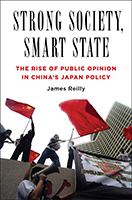
Strong Society, Smart State
The rise and influence of public opinion on Chinese foreign policy reveals a remarkable evolution in authoritarian responses to social turmoil. James Reilly shows how Chinese leaders have responded to popular demands for political participation with a sophisticated strategy of tolerance, responsiveness, persuasion, and repression—a successful approach that helps explain how and why the Communist Party continues to rule China.Through a detailed examination of China's relations with Japan from 1980 to 2010, Reilly reveals the populist origins of a wave of anti-Japanese public mobilization that swept across China in the early 2000s. Popular protests, sensationalist media content, and emotional public opinion combined to impede diplomatic negotiations, interrupt economic cooperation, spur belligerent rhetoric, and reshape public debates. Facing a mounting domestic and diplomatic crisis, Chinese leaders responded with a remarkable reversal, curtailing protests and cooling public anger toward Japan. Far from being a fragile state overwhelmed by popular nationalism, market forces, or information technology, China has emerged as a robust and flexible regime that has adapted to its new environment with remarkable speed and effectiveness. Reilly's study of public opinion's influence on foreign policy extends beyond democratic states. It reveals how persuasion and responsiveness sustain Communist Party rule in China and develops a method for examining similar dynamics in different authoritarian regimes. He draws upon public opinion surveys, interviews with Chinese activists, quantitative media analysis, and internal government documents to support his findings, joining theories in international relations, social movements, and public opinion. — Columbia University Press
Books
11.01.12
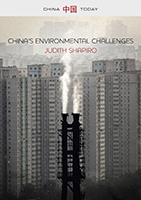
China’s Environmental Challenges
China’s huge environmental challenges are significant for us all. They affect not only the health and well-being of China but the very future of the planet. In this trailblazing book, noted China specialist and environmentalist Judith Shapiro investigates China’s struggle to achieve sustainable development against a backdrop of acute rural poverty and soaring middle class consumption. Using five core analytical concepts to explore the complexities of this struggle - the implications of globalization, the challenges of governance; contested national identity, the evolution of civil society and problems of environmental justice and equity - Shapiro poses a number of pressing questions: Do the Chinese people have the right to the higher living standards enjoyed in the developed world? Are China’s environmental problems so severe that they may shake the government’s stability, legitimacy and control? To what extent are China’s environmental problems due to patterns of Western consumption? And in a world of increasing limits on resources and pollution “sinks,” is it even possible to build an equitable system in which people enjoy equal access to resources without taking them from successive generations, from the poor, or from other species?China and the planet are at a pivotal moment; the path towards a more sustainable development model is still open. But - as Shapiro persuasively argues - making this choice will require humility, creativity, and a rejection of business as usual. The window of opportunity will not be open much longer. —Polity
Books
10.18.12
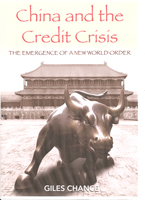
China and the Credit Crisis
China’s arrival on the world scene in the 1990s was the largest part of globalization. It brought many benefits worldwide: lower prices to Western consumers, large profits to multinationals, huge windfalls to commodity-rich countries, and employment and strong export growth to China. China’s emergence as a major global supplier and trader helped to create a boom which brought global growth with lower inflation and, for a time, an illusory stability, and also made China into the largest financer of the developed world.But Western politicians, regulators and bankers, their vision limited by national boundaries, did not understand at the time the true causes of the global economic boom of the Millennium. They attributed it largely to a revolution in risk management and their own wise policies. China and the Credit Crisis argues that if the role played in the new prosperity by globalization and an emerging China had been better understood, more appropriate policies and actions may have been adopted by central bankers and regulators which could have avoided the financial crash in 2008, or at least greatly limited its impact.China and the Credit Crisis goes on to examine the larger role that China will continue to play in a post-crisis world.
Books
10.17.12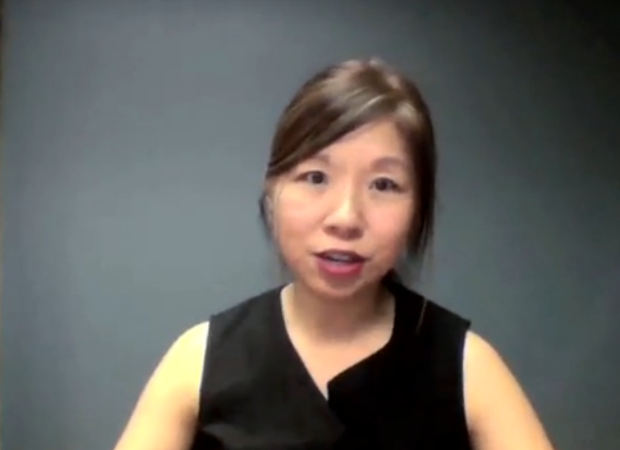
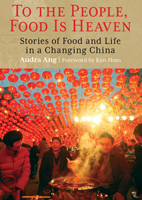
To the People, Food is Heaven
In China, life is comfortable for the fortunate few. For others, it’s a hand-to-mouth struggle for a full stomach, a place to live, wages for work done, and freedom to speak openly. It’s a place where few things are more important than food; “Have you eaten yet?” is another way of saying hello. After traversing the country and meeting its people, Ang shares her delicious experiences with us. She tells of a clandestine cup of salty yak butter tea with a Tibetan monk during a military crackdown, and explains how a fluffy spring onion omelet encapsulates China’s drive for rural development. You’ll have lunch with some of the country’s most enduring activists, savor meals with earthquake survivors, and get to know a house cleaner who makes the best fried chicken in all of Beijing. Through her reporting, Ang bites into the gaping divide between rich and poor, urban and rural reform, intolerance for dissent, and the growing dissatisfaction with those in power. By serving these topics to us one at a time through the stories of ordinary citizens, To the People, Food Is Heaven provides a fresh perspective beyond the country’s anonymous identity as an economic powerhouse. Ang plates a terrific, wide-ranging feast that is the new China, a country convulsed by change and propelled by aspiration. Have you eaten yet? —Lyons Press{chop}
Books
10.09.12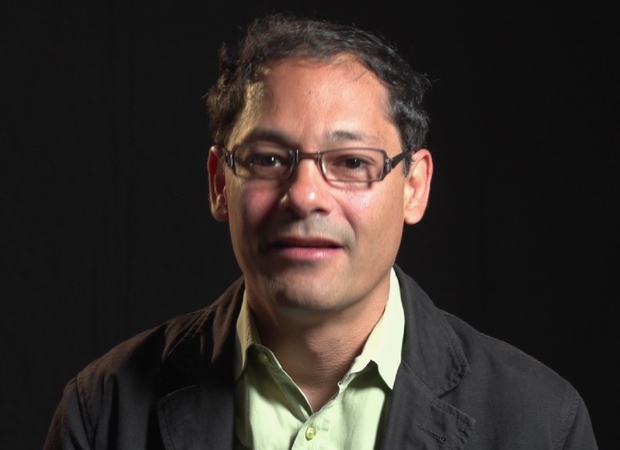
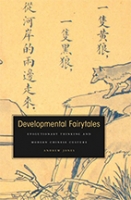
Developmental Fairy Tales
In 1992 Deng Xiaoping famously declared, “Development is the only hard imperative.” What ensued was the transformation of China from a socialist state to a capitalist market economy. The spirit of development has since become the prevailing creed of the People’s Republic, helping to bring about unprecedented modern prosperity, but also creating new forms of poverty, staggering social upheaval, physical dislocation, and environmental destruction.In Developmental Fairy Tales, Andrew Jones asserts that the groundwork for this recent transformation was laid in the late nineteenth century, with the translation of the evolutionary works of Lamarck, Darwin, and Spencer into Chinese letters. He traces the ways that the evolutionary narrative itself evolved into a form of vernacular knowledge which dissolved the boundaries between beast and man and reframed childhood development as a recapitulation of civilizational ascent, through which a beleaguered China might struggle for existence and claim a place in the modern world-system.This narrative left an indelible imprint on China’s literature and popular media, from children’s primers to print culture, from fairy tales to filmmaking. Jones’s analysis offers an innovative and interdisciplinary angle of vision on China’s cultural evolution. He focuses especially on China’s foremost modern writer and public intellectual, Lu Xun, in whose work the fierce contradictions of his generation’s developmentalist aspirations became the stuff of pedagogical parable. Developmental Fairy Tales revises our understanding of literature’s role in the making of modern China by revising our understanding of developmentalism’s role in modern Chinese literature. —Harvard University Press
Books
10.03.12
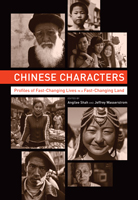
Chinese Characters
Though China is currently in the global spotlight, few outside its borders have a feel for the tremendous diversity of the lives being led inside the country. This collection of compelling stories challenges oversimplified views of China by shifting the focus away from the question of China’s place in the global order and zeroing in on what is happening on the ground. Some of the most talented and respected journalists and scholars writing about China today profile people who defy the stereotypes that are broadcast in print, over the airwaves, and online. These include an artist who copies classical paintings for export to tourist markets, Xi’an migrant workers who make a living recycling trash in the city dumps, a Taoist mystic, an entrepreneur hoping to strike it rich in the rental car business, an old woman about to lose her home in Beijing, and a crusading legal scholar.The immense variety in the lives of these Chinese characters dispels any lingering sense that China has a monolithic population or is just a place where dissidents fight Communist Party loyalists and laborers create goods for millionaires. By bringing to life the exciting, saddening, humorous, confusing, and utterly ordinary stories of these people, the gifted contributors create a multi-faceted portrait of a remarkable country undergoing extraordinary transformations. —University of California Press{chop}
Books
10.01.12
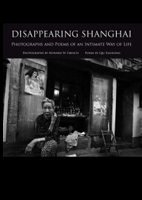
Disappearing Shanghai
This book is a photographic exploration of life in the old and rapidly disappearing quarters of Shanghai, with accompanying poems and essays by the author of fiction and poetry, Qiu Xiaolong.The photographs, all taken in a documentary style over a period of five years, represent an intimate and invaluable visual natural history of a way of life in the workers quarters and other central districts of the city that held sway throughout the 20th century and into the early years of the 21st century, before yielding to the ambitious ongoing efforts at urban reconstruction.Mr. Qiu, whose best-known books are largely set in this old city, where his protagonist Inspector Chen walks around in investigations, is suited like few others to provide a lyrical accompanying text whose purpose is to celebrate the life, beauty and texture of this world before it has vanished altogether.No photographer has pursued this subject with more dedication and persistence than Mr. French, whose photographs of Shanghai have been exhibited on four continents. Taken together, the work of these two contributors offers compelling esthetics and lasting historical value for lovers of Shanghai, past, present and future.—Homa & Sekey Books
Books
09.27.12
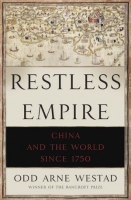
Restless Empire
As the twenty-first century dawns, China stands at a crossroads. The largest and most populous country on earth and currently the world’s second biggest economy, China has recently reclaimed its historic place at the center of global affairs after decades of internal chaos and disastrous foreign relations. But even as China tentatively reengages with the outside world, the contradictions of its development risks pushing it back into an era of insularity and instability—a regression that, as China’s recent history shows, would have serious implications for all other nations.In Restless Empire, award-winning historian Odd Arne Westad traces China’s complex foreign affairs over the past 250 years, identifying the forces that will determine the country’s path in the decades to come. Since the height of the Qing Empire in the eighteenth century, China’s interactions—and confrontations—with foreign powers have caused its worldview to fluctuate wildly between extremes of dominance and subjugation, emulation and defiance. From the invasion of Burma in the 1760s to the Boxer Rebellion in the early 20th century to the 2001 standoff over a downed U.S. spy plane, many of these encounters have left Chinese with a lingering sense of humiliation and resentment, and inflamed their notions of justice, hierarchy, and Chinese centrality in world affairs. Recently, China’s rising influence on the world stage has shown what the country stands to gain from international cooperation and openness. But as Westad shows, the nation’s success will ultimately hinge on its ability to engage with potential international partners while simultaneously safeguarding its own strength and stability. —Basic Books
Books
09.19.12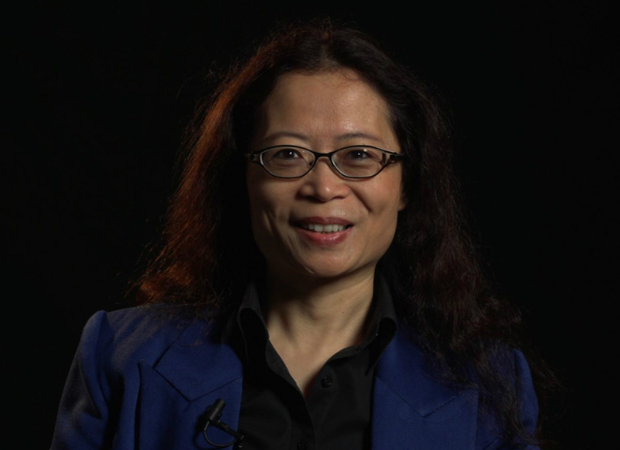
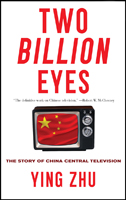
Two Billion Eyes
With over 1.2 billion viewers globally, including millions in the United States, China Central Television (CCTV) reaches the world’s single largest audience. The official mouthpiece of the Chinese Communist Party, CCTV is also a dynamic modern media conglomerate, fully reliant on advertising revenue and aggressively competitive both within China and on the global media scene. Yet this hugely influential media player is all but unknown to the west. Two Billion Eyes tells its story for the first time.For this unprecedented look inside CCTV, noted Chinese media expert Ying Zhu has conducted candid interviews with the network’s leading players, including senior executives, noted investigative journalists, and popular news anchors, as well as directors and producers of some of CCTV’s most successful dramatic and current affairs programs.Examining the broader story of CCTV in a changing China over the past quarter century, Two Billion Eyes looks at how commercial priorities and journalistic ethics have competed with the demands of state censorship and how Chinese audiences themselves have grown more critical, even as Party control shows no signs of loosening. A true inside account of one of the world’s most important companies, this is a crucial new book for anyone seeking to understand contemporary China. —The New Press
Books
09.19.12
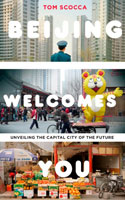
Beijing Welcomes You
Within the past decade, Beijing has debuted as the defining city of the now and foreseeable future, and China as the ascendant global power. Beijing is the ultimate representation of China's political and cultural capital, of its might—and threat. For so long, the city was closed off to the world, literally built around the Forbidden City, the icon of all that was ominous about China. But now, the country is eager to show off its new openness, its glory and magnanimity, and Beijing is its star. When Tom Scocca arrived in 2004—an American eager to see another culture—Beijing was looking toward welcoming the world to its Olympics four years later, and preparations were in full swing to create a renewed city. Scocca talked to the scientists tasked with changing the weather; interviewed designers and architects churning out projects; checked out the campaign to stop public spitting; documented the planting of trees, the rerouting of traffic, the demolition of the old city, and the construction of the new metropolis. Beijing Welcomes You is a glimpse into the future and an encounter with an urban place we do not yet fully comprehend, and the superpower it is essential we get to know better. —Riverhead Books
Books
08.29.12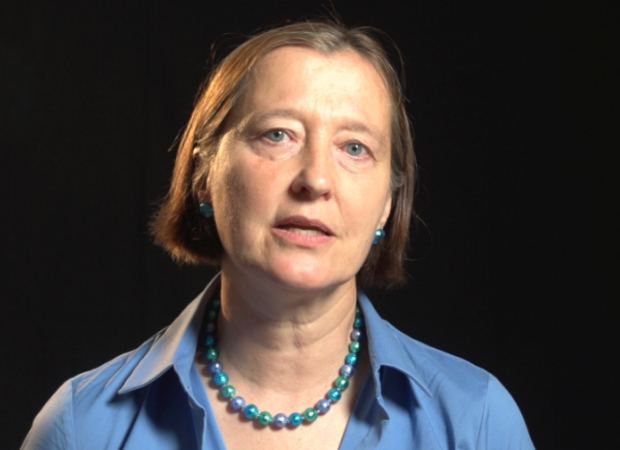
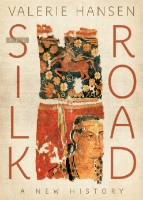
The Silk Road
The Silk Road is as iconic in world history as the Colossus of Rhodes or the Suez Canal. But what was it, exactly? It conjures up a hazy image of a caravan of camels laden with silk on a dusty desert track, reaching from China to Rome. The reality was different—and far more interesting—as revealed in this new history.In The Silk Road, Valerie Hansen describes the remarkable archeological finds that revolutionize our understanding of these trade routes. For centuries, key records remained hidden—sometimes deliberately buried by bureaucrats for safe keeping. But the sands of the Taklamakan Desert have revealed fascinating material, sometimes preserved by illiterate locals who recycled official documents to make insoles for shoes or garments for the dead. Hansen explores seven oases along the road, from Xi'an to Samarkand, where merchants, envoys, pilgrims, and travelers mixed in cosmopolitan communities, tolerant of religions from Buddhism to Zoroastrianism. There was no single, continuous road, but a chain of markets that traded between east and west. China and the Roman Empire had very little direct trade. China's main partners were the peoples of modern-day Iran, whose tombs in China reveal much about their Zoroastrian beliefs. Silk was not the most important good on the road; paper, invented in China before Julius Caesar was born, had a bigger impact in Europe, while metals, spices, and glass were just as important as silk. Perhaps most significant of all was the road's transmission of ideas, technologies, and artistic motifs.The Silk Road is a fascinating story of archeological discovery, cultural transmission, and the intricate chains across Central Asia and China. —Oxford University Press
Books
08.15.12

Red Rock
Rock and roll—rebellious, individualistic, explosive—seems incongruent with modern Chinese society. But as the music has evolved from a Western import into something uniquely Chinese, it has shaped and been shaped by China’s unique system and its relationship with the outside world. Red Rock: The Long, Strange March of Chinese Rock & Roll looks at the people and events that have created Chinese rock’s unique identity, and tracks the music’s long journey from the Mao years to present. After boiling below the surface for over twenty years and now emerging from a thriving underground scene, Chinese rock may be ready to smash its guitars on the global stage. —Earnshaw Books
Books
07.31.12
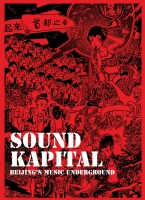
Sound Kapital
China exists today in a liminal realm, caught between the socialist idealism of old and a calamitous drive for wealth spurned by recent free market reforms. This seemingly unbridgeable gap tears at the country’s social fabric while provoking younger generations to greater artistic heights. The unique sound emerging from Beijing’s underground delves deeply into this void, aggressively questioning the moral and social basis of China’s fragile modernity even as it subsists upon it.A formidable new wave of Chinese musicians is taking the city by storm. Revolving around four venues spread across Beijing, a burgeoning group of performers are working outside government-controlled media channels, and in the process, capturing the attention of the international music community. They now constitute a fresh, independent voice in a country renowned for creative conformity and saccharine Cantonese pop. In Sound Kapital, photographer Matthew Niederhauser captures the energy of the personalities and performers at D-22, Yugong Yishan, 2 Kolegas, and Mao Livehouse. These revolutionary Beijing nightclubs remain at the core of the city’s creative explosion by hosting an eclectic mix of punk, experimental, rock, and folk performances.Included with the book are concert posters and illustrations that encapsulate the underground scene in Beijing, as well as a CD sampler of the new music being produced. There is no doubt that these musicians will continue to break ground within Beijing’s nascent artistic landscape, helping to push the boundaries of an already expanding realm of independent thought and musical expression in China.—powerHouse Books
Books
07.26.12
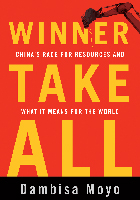
Winner Take All
Commodities permeate virtually every aspect of modern daily living, but for all their importance—their breadth, their depth, their intricacies, and their central role in daily life—few people who are not economists or traders know how commodity markets work. Almost every day, newspaper headlines and media commentators scream warnings of impending doom--shortages of arable land, clashes over water, and political conflict as global demand for fossil fuels outstrips supply. The picture is bleak, but our grasp of the details and the macro shifts in commodities markets remain blurry.Winner Take All is about the commodity dynamics that the world will face over the next several decades. In particular, it is about the implications of China’s rush for resources across all regions of the world. The scale of China’s resource campaign for hard commodities (metals and minerals) and soft commodities (timber and food) is among the largest in history. To be sure, China is not the first country to launch a global crusade to secure resources. From Britain’s transcontinental operations dating back to the end of the 16th century, to the rise of modern European and American transnational corporations between the mid 1860’s and 1870’s, the industrial revolution that powered these economies created a voracious demand for raw materials and created the need to go far beyond their native countries.So too is China’s resource rush today. Although still in its early stages, already the breadth of China’s operation is awesome, and seemingly unstoppable. China’s global charge for commodities is a story of China’s quest to secure its claims on resource assets, and to guarantee the flow of inputs needed to continue to drive economic development. —Basic Books
Books
07.10.12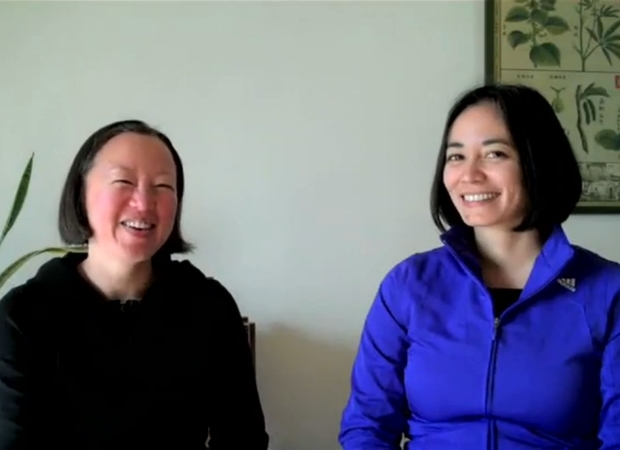
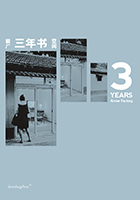
3 Years: Arrow Factory
Arrow Factory is an independently run art space located in a narrow 200-year-old alleyway in the center of Beijing. Founded in 2008, Arrow Factory reclaimed an existing storefront and transformed it into a space for site-specific installations and projects by contemporary artists that are designed to be viewed from the street twenty-four hours a day, seven days a week. Arrow Factory has aimed at reaching a diverse public made up of neighboring residents, as well as local and international art audiences, and has been instrumental in encouraging new avenues for site-oriented artistic production in China.With this publication, audiences are able to view comprehensive documentation of some twenty-eight temporary site-specific works produced by Chinese and international artists at Arrow Factory over the past three years between April 2008 to March 2011. 3 Years: Arrow Factory provides a valuable look into the uniqueness of our contemporary situation, and captures for posterity the fleeting connections that situate Arrow Factory in China’s larger economic, intellectual, and artistic zeitgeist. —Sternberg Press
Books
07.10.12
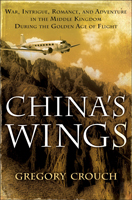
China’s Wings
From the acclaimed author of Enduring Patagonia comes a dazzling tale of aerial adventure set against the roiling backdrop of war in Asia. The incredible real-life saga of the flying band of brothers who opened the skies over China in the years leading up to World War II—and boldly safeguarded them during that conflict—China’s Wings is one of the most exhilarating untold chapters in the annals of flight. Drawing on meticulous research, primary sources, and extensive personal interviews with participants, Gregory Crouch offers harrowing accounts of brutal bombing runs and heroic evacuations, as the fight to keep one airline flying becomes part of the larger struggle for China’s survival. He plunges us into a world of perilous night flights, emergency water landings, and the constant threat of predatory Japanese warplanes. When Japanese forces capture Burma and blockade China’s only overland supply route, Bond and his pilots must battle shortages of airplanes, personnel, and spare parts to airlift supplies over an untried five-hundred-mile-long aerial gauntlet high above the Himalayas—the infamous “Hump”—pioneering one of the most celebrated endeavors in aviation history.A hero’s-eye view of history in the grand tradition of Lynne Olson’s Citizens of London, China’s Wings takes readers on a mesmerizing journey to a time and place that reshaped the modern world. —Bantam
Books
06.12.12
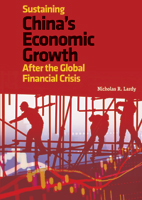
Sustaining China’s Economic Growth After the Global Financial Crisis
The global financial crisis and ensuing economic downturn have raised many questions concerning the future of global economic growth. Prior to the financial crisis, global growth was characterized by growing imbalances, reflected primarily in large trade surpluses in China, Japan, Germany, and the oil exporting countries and rapidly growing deficits, primarily in the United States. The global crisis raises the question of whether the previous growth model of low consumption, high saving countries such as China is obsolete. Although a strong and rapid policy response beginning in the early fall of 2008 made China the first globally significant economy to come off the bottom and begin to grow more rapidly, critics charged that China's recovery was based on the old growth model, relying primarily on burgeoning investment in the short run and the expectation of a revival of expanding net exports once global recovery gained traction.This study examines China's response to the global crisis, the prospects for altering the model of economic growth that dominated the first decade of this century, and the implications for the United States and the global economy of successful Chinese rebalancing. —Peterson Institute for International Economics
Books
06.12.12

Eating Bitterness
Every year over 200 million peasants flock to China’s urban centers, providing a profusion of cheap labor that helps fuel the country’s staggering economic growth. Award-winning journalist Michelle Dammon Loyalka follows the trials and triumphs of eight such migrants—including a vegetable vendor, an itinerant knife sharpener, a free-spirited recycler, and a cash-strapped mother—offering an inside look at the pain, self-sacrifice, and uncertainty underlying China’s dramatic national transformation. At the heart of the book lies each person’s ability to “eat bitterness”—a term that roughly means to endure hardships, overcome difficulties, and forge ahead. These stories illustrate why China continues to advance, even as the rest of the world remains embroiled in financial turmoil. At the same time, Eating Bitterness demonstrates how dealing with the issues facing this class of people constitutes China’s most pressing domestic challenge. —University of California Press{chop}
Books
05.22.12
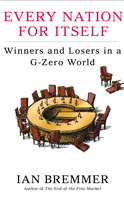
Every Nation for Itself
Forget the G-7 and the G-20; we are entering a leaderless "G- Zero" era—with profound implications for every country and corporation. The world power structure is facing a vacuum at the top. With the unifying urgency of the financial crisis behind us, the diverse political and economic values of the G-20 are curtailing the world's most powerful governments' ability to mediate growing global challenges. There is no viable alternative group to take its place. The United States lacks the resources and the political will to continue as the primary provider of global public goods. China has no interest in accepting the burdens of international leadership. Europe is occupied with saving the eurozone, and Japan is tied down with its own problems. Emerging powers such as Brazil, India, and Russia are too focused on domestic development to welcome new responsibilities abroad. The result is a G-Zero world in which no single country or bloc has the political or economic leverage-or the desire-to drive a truly international agenda. Ian Bremmer explains how this will lead to extended and intensified conflict over vitally important issues, such as international economic coordination, financial regulatory reform, trade policy, and climate change. We are facing a time of profound uncertainty. Bremmer shows who will benefit, who will suffer, and why this increased state of conflict is both inevitable and unsustainable. —Penguin Books Limited
Books
05.21.12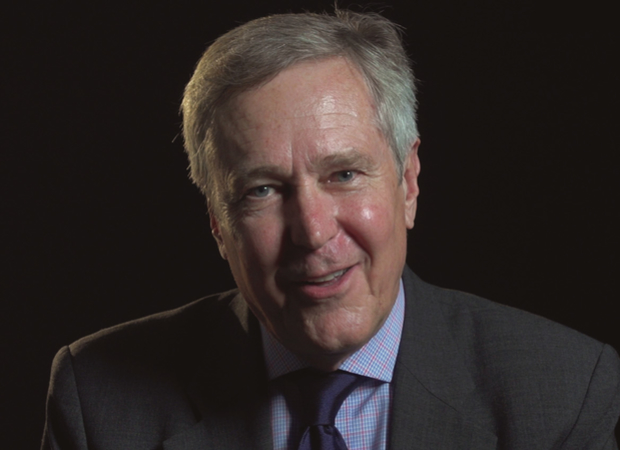
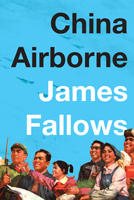
China Airborne
More than two-thirds of the new airports under construction today are being built in China. Chinese airlines expect to triple their fleet size over the next decade and will account for the fastest-growing market for Boeing and Airbus. But the Chinese are determined to be more than customers. In 2011, China announced its Twelfth Five-Year Plan, which included the commitment to spend a quarter of a trillion dollars to jump-start its aerospace industry. Its goal is to produce the Boeings and Airbuses of the future. Toward that end, it acquired two American companies: Cirrus Aviation, maker of the world’s most popular small propeller plane, and Teledyne Continental, which produces the engines for Cirrus and other small aircraft.In China Airborne, James Fallows documents, for the first time, the extraordinary scale of this project and explains why it is a crucial test case for China’s hopes for modernization and innovation in other industries. He makes clear how it stands to catalyze the nation’s hyper-growth and hyper-urbanization, revolutionizing China in ways analogous to the building of America’s transcontinental railroad in the nineteenth century. Fallows chronicles life in the city of Xi’an, home to more than 250,000 aerospace engineers and assembly workers, and introduces us to some of the hucksters, visionaries, entrepreneurs, and dreamers who seek to benefit from China’s pursuit of aerospace supremacy. He concludes by examining what this latest demonstration of Chinese ambition means for the United States and the rest of the world—and the right ways to understand it. —Pantheon Books
Books
05.11.12
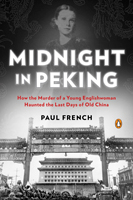
Midnight in Peking
January, 1937: Peking is a heady mix of privilege and scandal, lavish cocktail bars and opium dens, warlords and corruption, rumors and superstition—and the clock is ticking down on all of it. In the exclusive Legation Quarter, the foreign residents wait nervously for the axe to fall. Japanese troops have already occupied Manchuria and are poised to advance south. Word has it that Chiang Kai-shek and his shaky government, long since fled to Nanking, are ready to cut a deal with Tokyo and leave Peking to its fate. Each day brings a racheting up of tension for Chinese and foreigners alike inside the ancient city walls. On one of those walls, not far from the nefarious Badlands, is a massive watchtower—haunted, so the locals believe, by fox spirits that prey upon innocent mortals.Then one bitterly cold night, the body of an innocent mortal is dumped there. It belongs to Pamela Werner, the daughter of a former British consul to China, and when the details of her death become known, people find it hard to credit that any human could treat another in such a fashion. Even as the Japanese noose on the city tightens, the killing of Pamela transfixes Peking. Seventy-five years after these events, Paul French finally gives the case the resolution it was denied at the time. Midnight in Peking is the un-put-downable true story of a murder that will make you hold your loved ones close, and also a sweepingly evocative account of the end of an era. —Penguin Books
Books
05.11.12
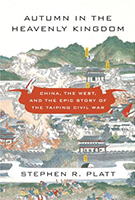
Autumn in the Heavenly Kingdom
A gripping account of China’s nineteenth-century Taiping Rebellion, one of the largest civil wars in history, Autumn in the Heavenly Kingdom brims with unforgettable characters and vivid re-creations of massive and often gruesome battles—a sweeping yet intimate portrait of the conflict that shaped the fate of modern China. The story begins in the early 1850s, the waning years of the Qing dynasty, when word spread of a major revolution brewing in the provinces, led by a failed civil servant who claimed to be the son of God and brother of Jesus. The Taiping rebels drew their power from the poor and the disenfranchised, unleashing the ethnic rage of millions of Chinese against their Manchu rulers. This homegrown movement seemed all but unstoppable until Britain and the United States stepped in and threw their support behind the Manchus: after years of massive carnage, all opposition to Qing rule was effectively snuffed out for generations.Stephen R. Platt recounts these events in spellbinding detail, building his story on two fascinating characters with opposing visions for China’s future: the conservative Confucian scholar Zeng Guofan, an accidental general who emerged as the most influential military strategist in China’s modern history; and Hong Rengan, a brilliant Taiping leader whose grand vision of building a modern, industrial, and pro-Western Chinese state ended in tragic failure. —Knopf
Books
04.25.12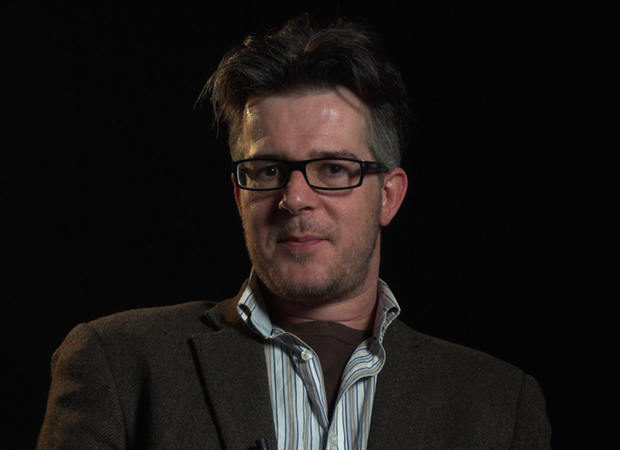
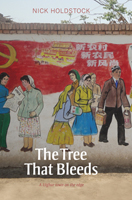
The Tree That Bleeds
In 1997 a small town in a remote part of China was shaken by violent protests that led to the imposition of martial law. Some said it was a peaceful demonstration that was brutally suppressed by the government; others that it was an act of terrorism. When Nick Holdstock arrived in 2001, the town was still bitterly divided. The main resentment was between the Uighurs (an ethnic minority in the region) and the Han (the ethnic majority in China). While living in Xinjiang, Holdstock was confronted with the political, economic and religious sources of conflict between these different communities, which would later result in the terrible violence of July 2009, when hundreds died in further riots in the region. The Tree that Bleeds is a book about what happens when people stop believing their government will listen. —Luath Press Limited
Books
04.24.12
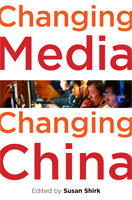
Changing Media, Changing China
Thirty years ago, the Chinese Communist Party (CCP) made a fateful decision: to allow newspapers, magazines, television, and radio stations to compete in the marketplace instead of being financed exclusively by the government. The political and social implications of that decision are still unfolding as the Chinese government, media, and public adapt to the new information environment.Edited by Susan Shirk, one of America's leading experts on contemporary China, this collection of essays brings together a who's who of experts—Chinese and American—writing about all aspects of the changing media landscape in China. In detailed case studies, the authors describe how the media is reshaping itself from a propaganda mouthpiece into an agent of watchdog journalism, how politicians are reacting to increased scrutiny from the media, and how television, newspapers, magazines, and Web-based news sites navigate the cross-currents between the open marketplace and the CCP censors. China has over 360 million Internet users, more than any other country, and an astounding 162 million bloggers. The growth of Internet access has dramatically increased the information available, the variety and timeliness of the news, and its national and international reach. But China is still far from having a free press. As of 2008, the international NGO Freedom House ranked China 181 worst out of 195 countries in terms of press restrictions, and Chinese journalists have been aptly described as "dancing in shackles." The recent controversy over China's censorship of Google highlights the CCP's deep ambivalence toward information freedom.Covering everything from the rise of business media and online public opinion polling to environmental journalism and the effect of media on foreign policy, Changing Media, Changing China reveals how the most populous nation on the planet is reacting to demands for real news. —Oxford University Press
Books
04.24.12
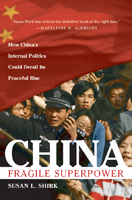
China: Fragile Superpower
Once a sleeping giant, China today is the world's fastest growing economy—the leading manufacturer of cell phones, laptop computers, and digital cameras—a dramatic turn-around that alarms many Westerners. But in China: Fragile Superpower, Susan L. Shirk opens up the black box of Chinese politics and finds that the real danger lies elsewhere—not in China's astonishing growth, but in the deep insecurity of its leaders. China's leaders face a troubling paradox: the more developed and prosperous the country becomes, the more insecure and threatened they feel.Shirk, a former Deputy Assistant Secretary of State responsible for China, knows many of today's Chinese rulers personally and has studied them for three decades. She offers invaluable insight into how they think—and what they fear. In this revealing book, readers see the world through the eyes of men like President Hu Jintao and former President Jiang Zemin. We discover a fragile communist regime desperate to survive in a society turned upside down by miraculous economic growth and a stunning new openness to the greater world. Indeed, ever since the 1989 pro-democracy protests in Tiananmen Square and the fall of communism in the Soviet Union, Chinese leaders have been afraid of its own citizens, and this fear motivates many of their decisions when dealing with the U.S. and other nations. In particular, the fervent nationalism of the Chinese people, combined with their passionate resentment of Japan and attachment to Taiwan, have made relations with this country a minefield. —Oxford University Press
Books
04.24.12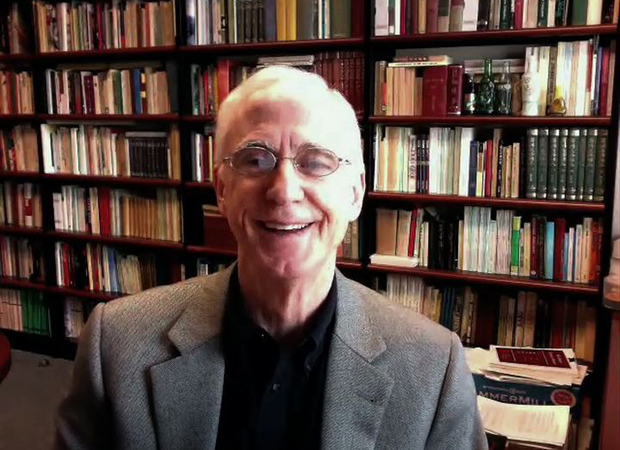
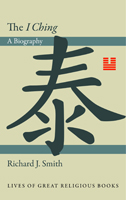
The I-Ching
The I Ching originated in China as a divination manual more than three thousand years ago. In 136 BCE the emperor declared it a Confucian classic, and in the centuries that followed, this work had a profound influence on the philosophy, religion, art, literature, politics, science, technology, and medicine of various cultures throughout East Asia. Jesuit missionaries brought knowledge of the I Ching to Europe in the seventeenth century, and the American counterculture embraced it in the 1960s. Here Richard Smith tells the extraordinary story of how this cryptic and once obscure book became one of the most widely read and extensively analyzed texts in all of world literature.In this concise history, Smith traces the evolution of the I Ching in China and throughout the world, explaining its complex structure, its manifold uses in different cultures, and its enduring appeal. He shows how the indigenous beliefs and customs of Japan, Korea, Vietnam, and Tibet "domesticated" the text, and he reflects on whether this Chinese classic can be compared to religious books such as the Bible or the Qur'an. Smith also looks at how the I Ching came to be published in dozens of languages, providing insight and inspiration to millions worldwide--including ardent admirers in the West such as Leibniz, Carl Jung, Philip K. Dick, Allen Ginsberg, Hermann Hesse, Bob Dylan, Jorge Luis Borges, and I. M. Pei. Smith offers an unparalleled biography of the most revered book in China's entire cultural tradition, and he shows us how this enigmatic ancient classic has become a truly global phenomenon. —Princeton University Press
Books
04.13.12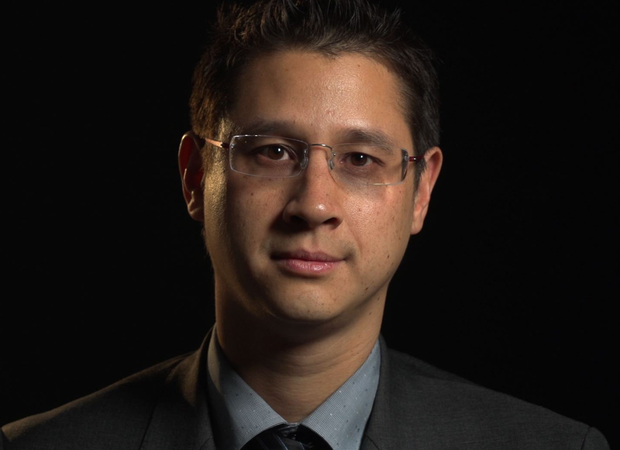
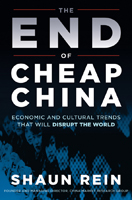
The End of Cheap China
Many Americans know China for manufacturing cheap products, thanks largely to the country's vast supply of low-cost workers. But China is changing, and the glut of cheap labor that has made everyday low prices possible is drying up as the Chinese people seek not to make iPhones, but to buy them. Shaun Rein, Founder of the China Market Research Group, puts China's continuing transformation from producer to large-scale consumer - a process that is farther along than most economists think - under the microscope, examining eight megatrends that are catalyzing change in China and posing threats to Americans' consumption-driven way of life. Rein takes an engaging and informative approach to examining the extraordinary changes taking place across all levels of Chinese society, talking to everyone from Chinese billionaires and senior government officials to poor migrant workers and even prostitutes. He draws on personal stories and experiences from living in China since the 1990s as well as hard economic data. Each chapter focuses on a different aspect of China's transformation, from fast-improving Chinese companies to confident, optimistic Chinese women to the role of China's government, and at the end breaks down key lessons for readers to take away. —John Wiley & Sons, Inc.
Books
04.11.12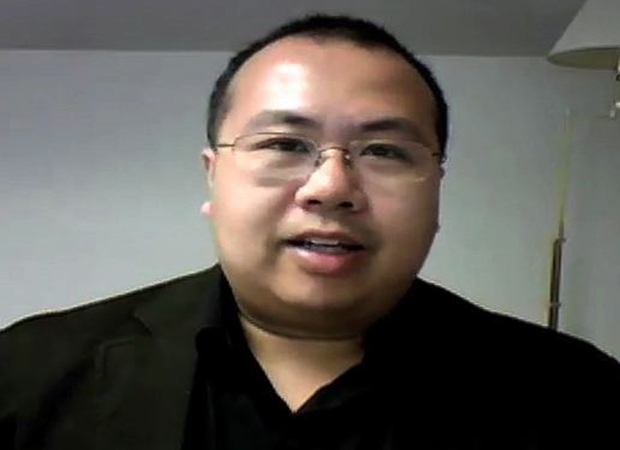
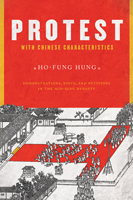
Protest with Chinese Characteristics
The origin of political modernity has long been tied to the Western history of protest and revolution, the currents of which many believe sparked popular dissent worldwide. Reviewing nearly one thousand instances of protest in China from the eighteenth to the early-nineteenth centuries, Ho-fung Hung charts an evolution of Chinese dissent that stands apart from Western trends.Hung samples from mid-Qing petitions and humble plaints to the emperor. He revisits rallies, riots, market strikes, and other forms of contention rarely considered in previous studies. Drawing on new world history, which accommodates parallels and divergences between political-economic and cultural developments East and West, Hung shows how the centralization of political power and an expanding market, coupled with a persistent Confucianist orthodoxy, shaped protesters' strategies and appeals in Qing China.This unique form of mid-Qing protest combined a quest for justice and autonomy with a filial-loyal respect for the imperial center, and Hung's careful research ties this distinct characteristic to popular protest in China today. As Hung makes clear, the nature of these protests prove late imperial China was anything but a stagnant and tranquil empire before the West cracked it open. In fact, the origins of modern popular politics in China predate the 1911 Revolution. Hung's work ultimately establishes a framework others can use to compare popular protest among different cultural fabrics. His book fundamentally recasts the evolution of such acts worldwide. —Columbia University Press
Books
03.29.12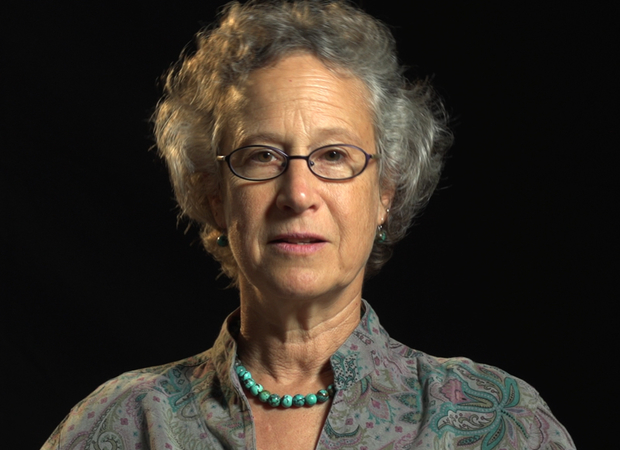
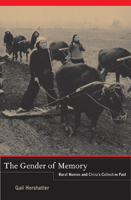
The Gender of Memory
What can we learn about the Chinese revolution by placing a doubly marginalized group—rural women—at the center of the inquiry? In this book, Gail Hershatter explores changes in the lives of seventy-two elderly women in rural Shaanxi province during the revolutionary decades of the 1950s and 1960s. Interweaving these women’s life histories with insightful analysis, Hershatter shows how Party-state policy became local and personal, and how it affected women’s agricultural work, domestic routines, activism, marriage, childbirth, and parenting—even their notions of virtue and respectability. The women narrate their pasts from the vantage point of the present and highlight their enduring virtues, important achievements, and most deeply harbored grievances. In showing what memories can tell us about gender as an axis of power, difference, and collectivity in 1950s rural China and the present, Hershatter powerfully examines the nature of socialism and how gender figured in its creation. —University of California Press
Books
03.28.12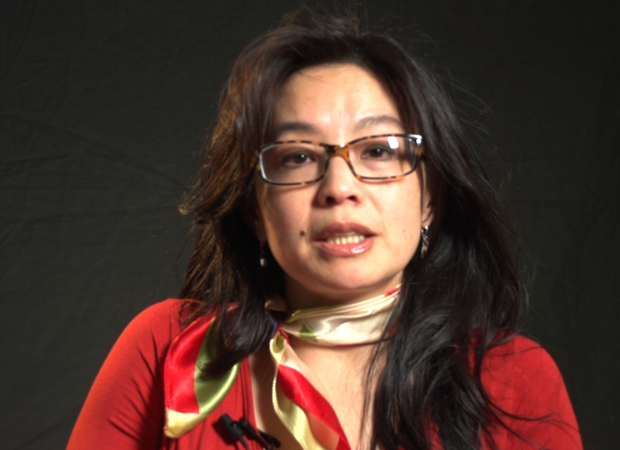
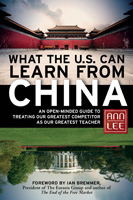
What the U.S. Can Learn from China
Mainstream media and the U.S. government regularly target China as a threat. Rather than viewing China’s power, influence, and contributions to the global economy in a negative light, Ann Lee asks: What can America learn from its competition? Why did China suffer so little from the global economic meltdown? What accounts for China’s extraordinary growth, despite one of the highest corporate tax rates in the world? How does the Chinese political system avoid partisan rancor but achieve genuine public accountability? From education to governance to foreign aid, Lee details the policies and practices that have made China a global power and then isolates the ways the United States can use China’s enduring principles to foster much-needed change at home.This is no whitewash. Lee is fully aware of China’s shortcomings, particularly in the area of human rights. She has relatives who suffered during the Cultural Revolution. But by overemphasizing our differences with China, the United States stands to miss a vital opportunity. Filled with sharp insights and thorough research, What the U.S. Can Learn from China is Lee’s rallying cry for a new approach at a time when learning from one another is the key to surviving and thriving. —Berrett-Koehler
Books
03.08.12
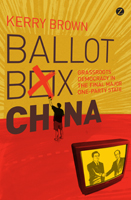
Ballot Box China
Since 1988, China has undergone one of the largest, but least understood experiments in grassroots democracy. Across 600,000 villages in China, with almost a million elections, some three million officials have been elected. The Chinese government believes that this is a step towards "democracy with Chinese characteristics". But to many involved in them, the elections have been mired by corruption, vote-rigging and cronyism. This book looks at the history of these elections, how they arose, what they have achieved and where they might be going, exploring the specific experience of elections by those who have taken part in them — the villagers in some of the most deprived areas of China. —Zed Books
Books
03.06.12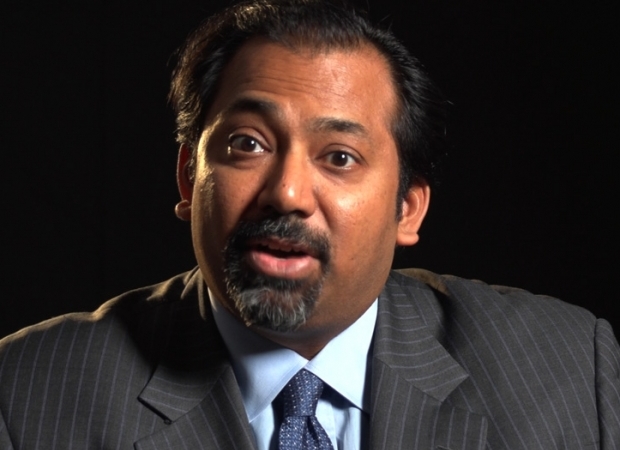
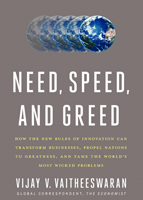
Need, Speed, and Greed
World-renowned economist Vijay V. Vaitheeswaran provides a deeply insightful, brilliantly informed guide to the innovation revolution now transforming the world. With echoes of Clayton Christensen’s The Innovator’s Dilemma, Tim Brown’s Change by Design, and Jared Diamond’s Guns, Germs, and Steel, Vaitheeswaran’s Need, Speed, and Greed introduces readers to the go-getters, imagineers, and visionaries now reshaping the global economy. Along the way, Vaitheeswaran teaches readers the skills they must develop to unleash their own inner innovator and reveals why America and other wealthy, privileged societies must embrace a path of inclusive growth and sustainability—or risk being left behind by history. —Harper Collins
Books
03.02.12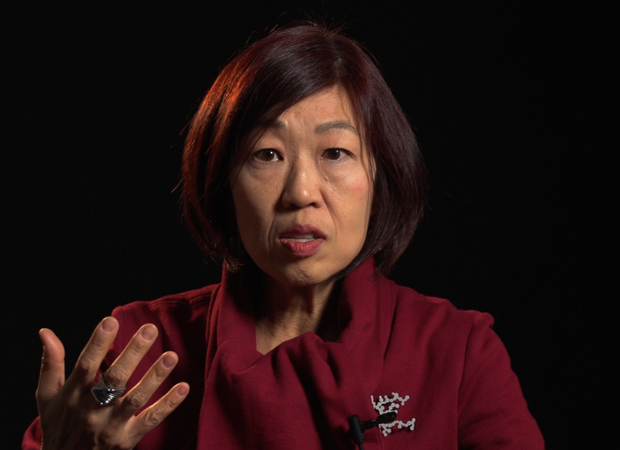
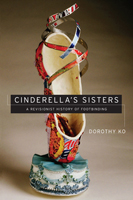
Cinderella’s Sisters
The history of footbinding is full of contradictions and unexpected turns. The practice originated in the dance culture of China’s medieval court and spread to gentry families, brothels, maid’s quarters, and peasant households. Conventional views of footbinding as patriarchal oppression often neglect its complex history and the incentives of the women involved. This revisionist history, elegantly written and meticulously researched, presents a fascinating new picture of the practice from its beginnings in the tenth century to its demise in the twentieth century. Neither condemning nor defending foot-binding, Dorothy Ko debunks many myths and misconceptions about its origins, development, and eventual end, exploring in the process the entanglements of male power and female desires during the practice's thousand-year history. Throughout her narrative, Ko deftly wields methods of social history, literary criticism, material culture studies, and the history of the body and fashion to illustrate how a practice that began as embodied lyricism—as a way to live as the poets imagined—ended up being an exercise in excess and folly. —University of California Press
Books
03.02.12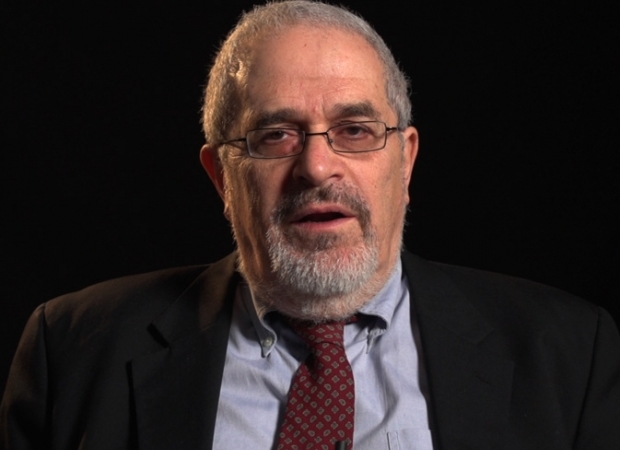
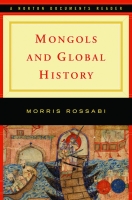
The Mongols and Global History
An accessible, documents-based introduction to the history of the Mongols. The volume opens with a brief original essay by Morris Rossabi, one of the world's foremost scholars on the Mongols. Rossabi's essay gives a historical and interpretive overview of the Mongols and charts their invasions and subsequent rule over the largest contiguous land empire in world history. Following is a rich collection of primary sources translated into English from Armenian, Arabic, Chinese, Franco-Italian, Italian, Korean, Latin, Persian, Russian, Syriac, and Tibetan that will give students a clear sense of the extraordinary geographic and linguistic range of the Mongol Empire as well as insight into the empire's rise, how it governed, and how it fell. Each primary source includes a headnote and study questions. The volume ends with a list of further readings. —WW Norton & Company, Inc.
Books
02.29.12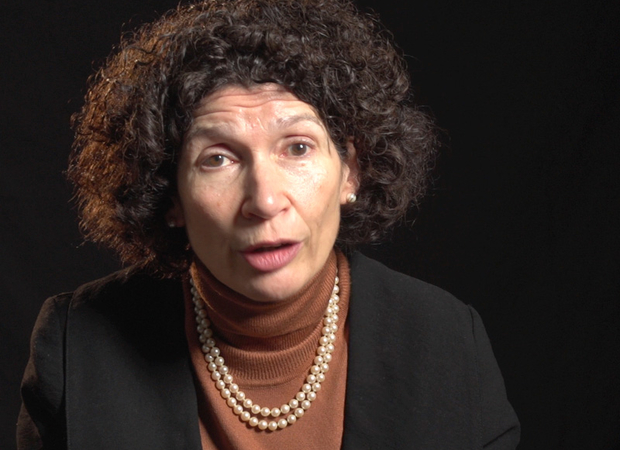
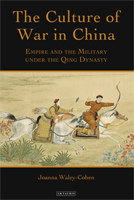
The Culture of War in China
What particularly distinguished the Qing from other ruling houses in China's imperial period? In this pathbreaking book, Joanna Waley-Cohen overturns conventional wisdom to identify military power and an accompanying martial ethos as defining characteristics of the high Qing empire. From 1636 to 1800, Emperors reinforced massive military expansion with a wide-ranging cultural campaign intended to bring military success, and the martial values associated with it, into the mainstream of cultural life. Military prowess and imperial power were linked in the popular imagination though endless repetition in literature, art and architecture a startlingly modern use of words and images that demonstrates the imperial grasp of culture's potency as a political tool. Overturning the presumption that reads back China's late-nineteenth-century military weakness into the past, Waley-Cohen shows that the Qing strongly emphasized military affairs, which they understood as complementary rather than subordinate to civil matters. Arguing that the militarization of culture that took place under the high-Qing emperors provided fertile ground from which the modern militarized nation-state could develop, Waley-Cohen contends that the past two centuries of Chinese weakness on the international scene may turn out to have been a protracted aberration, rather than the normal state of affairs. The Culture of War in China is a striking revisionist history that brings new insight into the nature of the Qing dynasty and the roots of the militarized modern state. —I. B. Tauris
Books
02.27.12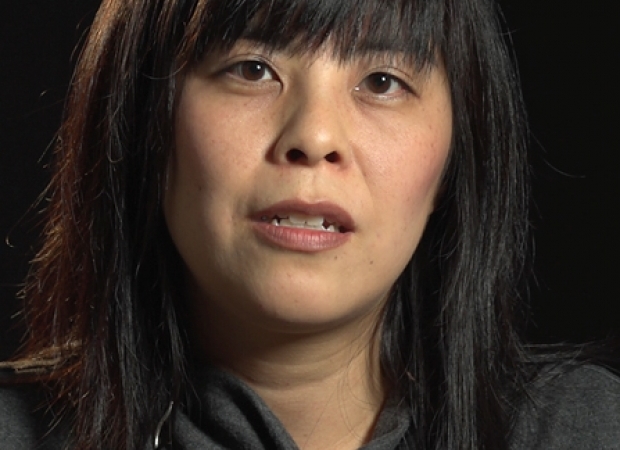
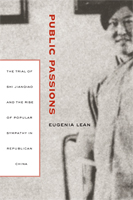
Public Passions
In 1935, a Chinese woman by the name of Shi Jianqiao murdered the notorious warlord Sun Chuanfang as he prayed in a Buddhist temple. This riveting work of history examines this well-publicized crime and the highly sensationalized trial of the killer. In a fascinating investigation of the media, political, and judicial records surrounding this cause célèbre, Eugenia Lean shows how Shi Jianqiao planned not only to avenge the death of her father, but also to attract media attention and galvanize public support.Lean traces the rise of a new sentiment—"popular sympathy"—in early twentieth-century China, a sentiment that ultimately served to exonerate the assassin. The book sheds new light on the political significance of emotions, the powerful influence of sensational media, modern law in China, and the gendered nature of modernity. —University of California Press
Books
02.16.12
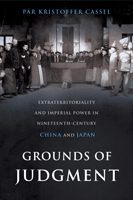
Grounds of Judgment
Perhaps more than anywhere else in the world, the nineteenth century encounter between East Asia and the Western world has been narrated as a legal encounter. Commercial treaties—negotiated by diplomats and focused on trade—framed the relationships among Tokugawa-Meiji Japan, Qing China, Choson Korea, and Western countries including Britain, France, and the United States. These treaties created a new legal order, very different than the colonial relationships that the West forged with other parts of the globe, which developed in dialogue with local precedents, local understandings of power, and local institutions. They established the rules by which foreign sojourners worked in East Asia, granting them near complete immunity from local laws and jurisdiction. The laws of extraterritoriality looked similar on paper but had very different trajectories in different East Asian countries.Par Cassel's first book explores extraterritoriality and the ways in which Western power operated in Japan and China from the 1820s to the 1920s. In Japan, the treaties established in the 1850s were abolished after drastic regime change a decade later and replaced by European-style reciprocal agreements by the turn of the century. In China, extraterritoriality stood for a hundred years, with treaties governing nearly one hundred treaty ports, extensive Christian missionary activity, foreign controlled railroads and mines, and other foreign interests, and of such complexity that even international lawyers couldn't easily interpret them.Extraterritoriality provided the springboard for foreign domination and has left Asia with a legacy of suspicion towards international law and organizations. The issue of unequal treaties has had a lasting effect on relations between East Asia and the West. Drawing on primary sources in Chinese, Japanese, Manchu, and several European languages, Cassel has written the first book to deal with exterritoriality in Sino-Japanese relations before 1895 and the triangular relationship between China, Japan, and the West. Grounds of Judgment is a groundbreaking history of Asian engagement with the outside world and within the region, with broader applications to understanding international history, law, and politics. —Oxford University Press
Books
02.09.12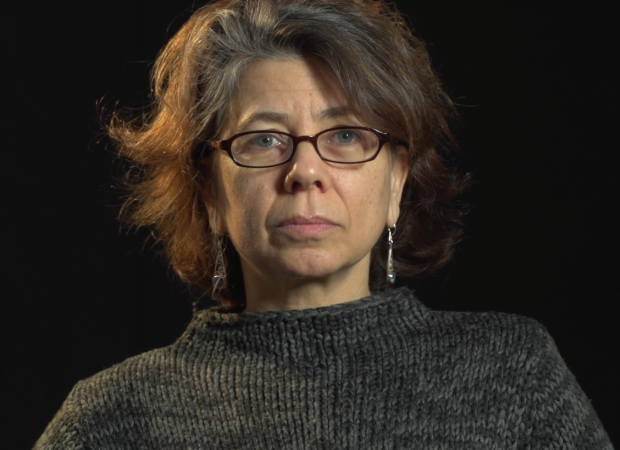
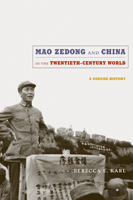
Mao Zedong and China in the Twentieth-Century World
Throughout this lively and concise historical account of Mao Zedong’s life and thought, Rebecca E. Karl places the revolutionary leader’s personal experiences, social visions and theory, military strategies, and developmental and foreign policies in a dynamic narrative of the Chinese revolution. She situates Mao and the revolution in a global setting informed by imperialism, decolonization, and third worldism, and discusses worldwide trends in politics, the economy, military power, and territorial sovereignty.Karl begins with Mao’s early life in a small village in Hunan province, documenting his relationships with his parents, passion for education, and political awakening during the fall of the Qing dynasty in late 1911. She traces his transition from liberal to Communist over the course of the next decade, his early critiques of the subjugation of women, and the gathering force of the May 4th movement for reform and radical change. Describing Mao’s rise to power, she delves into the dynamics of Communist organizing in an overwhelmingly agrarian society, and Mao’s confrontations with Chiang Kai-shek and other nationalist conservatives. She also considers his marriages and romantic liaisons and their relation to Mao as the revolutionary founder of Communism in China. After analyzing Mao’s stormy tenure as chairman of the People’s Republic of China, Karl concludes by examining his legacy in China from his death in 1976 through the Beijing Olympics in 2008. —Duke University Press
Books
02.03.12
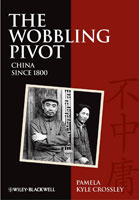
The Wobbling Pivot
This comprehensive but concise narrative of China since the eighteenth century builds its story around the delicate relationship between central government and local communities. With a nod to Ezra Pound's translation of the Chinese classic Zhongyong (The Unwobbling Pivot), Pamela Kyle Crossley argues that China's modern history has not wholly adhered to the ideal of the "unwobbling pivot", with China as a harmonious society based on principles of stability. Instead she argues that developments can be explained through China's surprising swings between centralization and decentralization, between local initiative and central authoritarianism. The author's approach is broad enough to provide a full introduction to modern Chinese history. Students new to the subject will be supported with timelines, maps, illustrations, and extensive notes to further readings, while those with a background in Chinese history will find an underlying theme in the narrative addressing long-standing interpretive issues. —Wiley-Blackwell
Books
10.01.11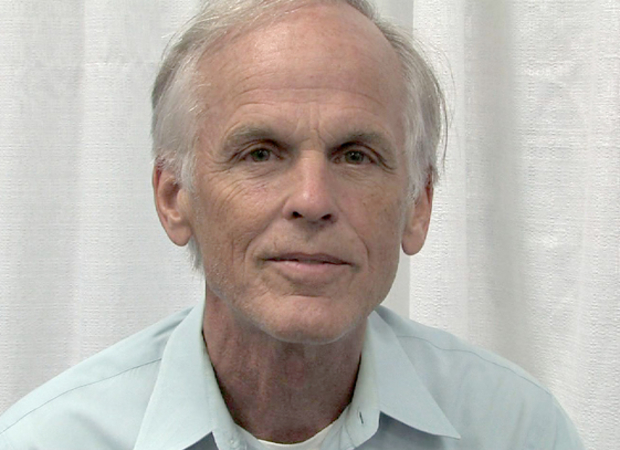

No Enemies, No Hatred
When the Nobel Peace Prize was awarded on December 10, 2010, its recipient, Liu Xiaobo, was in Jinzhou Prison, serving an eleven-year sentence for what Beijing called “incitement to subvert state power.” In Oslo, actress Liv Ullmann read a long statement the activist had prepared for his 2009 trial. It read in part: “I stand by the convictions I expressed in my ‘June Second Hunger Strike Declaration’ twenty years ago—I have no enemies and no hatred. None of the police who monitored, arrested, and interrogated me, none of the prosecutors who indicted me, and none of the judges who judged me are my enemies.”That statement is one of the pieces in this book, which includes writings spanning two decades, providing insight into all aspects of Chinese life. These works not only chronicle a leading dissident’s struggle against tyranny but enrich the record of universal longing for freedom and dignity. Liu speaks pragmatically, yet with deep-seated passion, about peasant land disputes, the Han Chinese in Tibet, child slavery, the CCP’s Olympic strategy, the Internet in China, the contemporary craze for Confucius, and the Tiananmen massacre. Also presented are poems written for his wife, Liu Xia, public documents, and a foreword by Václav Havel. This collection is an aid to reflection for Western readers who might take for granted the values Liu has dedicated his life to achieving for his homeland. —Harvard University Press
Books
09.28.11
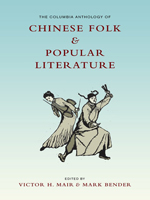
Columbia Anthology of Chinese Folk and Popular Literature
In The Columbia Anthology of Chinese Folk and Popular Literature, two of the world’s leading sinologists, Victor H. Mair and Mark Bender, capture the breadth of China’s oral-based literary heritage. This collection presents works drawn from the large body of oral literature of many of China’s recognized ethnic groups—including the Han, Yi, Miao, Tu, Daur, Tibetan, Uyghur, and Kazak—and the selections include a variety of genres. Chapters cover folk stories, songs, rituals, and drama, as well as epic traditions and professional storytelling, and feature both familiar and little-known texts, from the story of the woman warrior Hua Mulan to the love stories of urban storytellers in the Yangtze delta, the shaman rituals of the Manchu, and a trickster tale of the Daur people from the forests of the northeast. The Cannibal Grandmother of the Yi and other strange creatures and characters unsettle accepted notions of Chinese fable and literary form. Readers are introduced to antiphonal songs of the Zhuang and the Dong, who live among the fantastic limestone hills of the Guangxi Zhuang Autonomous Region; work and matchmaking songs of the mountain-dwelling She of Fujian province; and saltwater songs of the Cantonese-speaking boat people of Hong Kong. The editors feature the Mongolian epic poems of Geser Khan and Jangar; the sad tale of the Qeo family girl, from the Tu people of Gansu and Qinghai provinces; and local plays known as “rice sprouts” from Hebei province. These fascinating juxtapositions invite comparisons among cultures, styles, and genres, and expert translations preserve the individual character of each thrillingly imaginative work. —Columbia University Press
Books
09.21.11
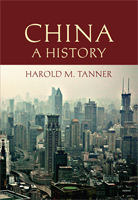
China: A History
Eminently accessible, yet rigorous, this engaging introduction to the political, social, and cultural development of Chinese civilization tells the story of China—from its beginnings to the present day—in a way that goes beyond simple, misleading accounts of a glorious civilization falling victim to Western and Japanese imperialism or of a supposedly isolated country only recently and reluctantly opening to the outside world. Woven into the narrative are the striking stories of heroes and villains, of women and men, of tragedy and comedy, of high culture and coarse humor, of extremes of wealth and poverty, of feast and famine, and of exquisite art and terrible suffering. Characteristic of Harold Tanner's presentation is the development and carefully balanced recounting of important themes—such as the ethnic diversity of the early empires, interaction with other civilizations, and the challenge of transforming a multi-ethnic empire into a modern nation-state—that other histories of China omit entirely or discuss only minimally. —Hackett Publishing Company
Books
09.15.11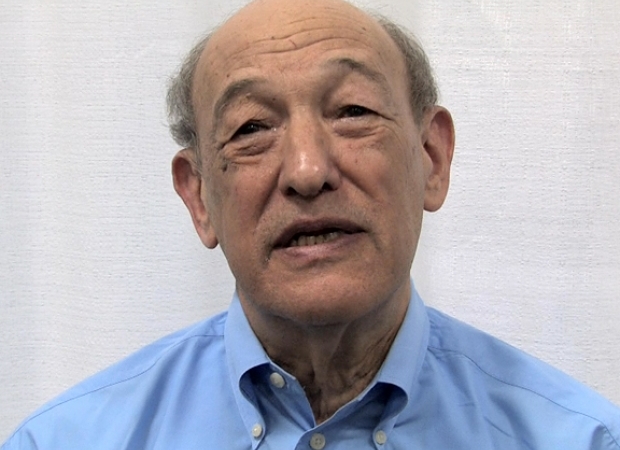
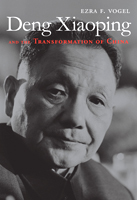
Deng Xiaoping and the Transformation of China
Harvard University Press: Perhaps no one in the twentieth century had a greater long-term impact on world history than Deng Xiaoping. And no scholar of contemporary East Asian history and culture is better qualified than Ezra Vogel to disentangle the many contradictions embodied in the life and legacy of China’s boldest strategist. Once described by Mao Zedong as a “needle inside a ball of cotton,” Deng was the pragmatic yet disciplined driving force behind China’s radical transformation in the late twentieth century. He confronted the damage wrought by the Cultural Revolution, dissolved Mao’s cult of personality, and loosened the economic and social policies that had stunted China’s growth. Obsessed with modernization and technology, Deng opened trade relations with the West, which lifted hundreds of millions of his countrymen out of poverty. Yet at the same time he answered to his authoritarian roots, most notably when he ordered the crackdown in June 1989 at Tiananmen Square. Deng’s youthful commitment to the Communist Party was cemented in Paris in the early 1920s, among a group of Chinese student-workers that also included Zhou Enlai. Deng returned home in 1927 to join the Chinese Revolution on the ground floor. In the fifty years of his tumultuous rise to power, he endured accusations, purges, and even exile before becoming China’s preeminent leader from 1978 to 1989 and again in 1992. When he reached the top, Deng saw an opportunity to creatively destroy much of the economic system he had helped build for five decades as a loyal follower of Mao—and he did not hesitate.{node, 795, 4}
Books
06.30.11
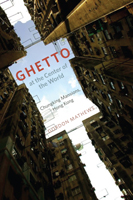
Ghetto at the Center of the World
There is nowhere else in the world quite like Chungking Mansions, a dilapidated seventeen-story commercial and residential structure in the heart of Hong Kong’s tourist district. A remarkably motley group of people call the building home: Pakistani phone stall operators, Chinese guesthouse workers, Nepalese heroin addicts, Indonesian sex workers, and traders and asylum seekers from all over Asia and Africa live and work there—even backpacking tourists rent rooms. In short, it is possibly the most globalized spot on the planet. But as Ghetto at the Center of the World shows us, a trip to Chungking Mansions reveals a far less glamorous side of globalization. A world away from the gleaming headquarters of multinational corporations, Chungking Mansions is emblematic of the way globalization actually works for most of the world’s people. Gordon Mathews’s intimate portrayal of the building’s polyethnic residents lays bare their intricate connections to the international circulation of goods, money, and ideas. We come to understand the day-to-day realities of globalization through the stories of entrepreneurs from Africa carting cell phones in their luggage to sell back home and temporary workers from South Asia struggling to earn money to bring to their families. And we see that this so-called ghetto—which inspires fear in many of Hong Kong’s other residents, despite its low crime rate—is not a place of darkness and desperation but a beacon of hope.
Gordon Mathews’s compendium of riveting stories enthralls and instructs in equal measure, making Ghetto at the Center of the World not just a fascinating tour of a singular place but also a peek into the future of life on our shrinking planet. —University of Chicago Press
Books
04.15.11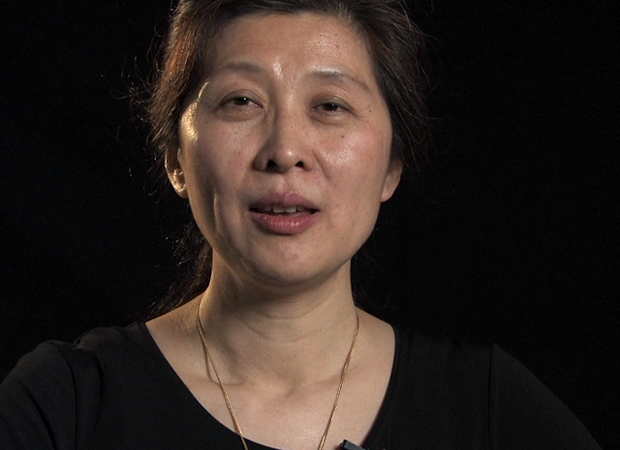
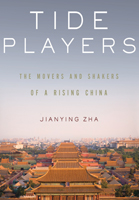
Tide Players
In Tide Players, acclaimed New Yorker contributor and author Jianying Zha depicts a new generation of movers and shakers who are transforming modern China. Through half a dozen sharply etched and nuanced profiles, Tide Players captures both the concrete detail and the epic dimension of life in the world’s fastest growing economy. Zha’s vivid cast of characters includes an unlikely couple who teamed up to become the country’s leading real-estate moguls; a gifted chameleon who transformed himself from Mao’s favorite “barefoot doctor” during the Cultural Revolution to a publishing maverick; and a tycoon of home-electronic chain stores who insisted on avenging his mother, who had been executed as “a counter-revolutionary criminal.” Alongside these entrepreneurs, Zha also brings us the intellectuals: a cantankerous professor at China’s top university; a former cultural minister turned prolific writer; and Zha’s own brother, a dissident who served a nine-year prison term for helping to found the China Democracy Party. Deeply engaging, lucid, and poignant, Zha’s insightful “insider-outsider” portraits offer a picture of a China that few Western readers have seen before. —The New Press{chop}
Books
01.15.11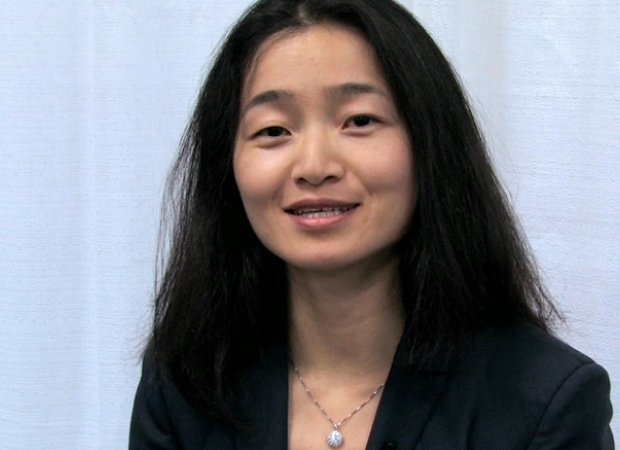
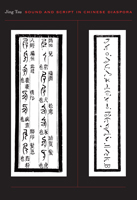
Sound and Script in Chinese Diaspora
What happens when language wars are not about hurling insults or quibbling over meanings, but are waged in the physical sounds and shapes of language itself? Native and foreign speakers, mother tongues and national languages, have jostled for distinction throughout the modern period. The fight for global dominance between the English and Chinese languages opens into historical battles over the control of the medium through standardization, technology, bilingualism, pronunciation, and literature in the Sinophone world. Encounters between global languages, as well as the internal tensions between Mandarin and other Chinese dialects, present a dynamic, interconnected picture of languages on the move.In Sound and Script in Chinese Diaspora, Jing Tsu explores the new global language trade, arguing that it aims at more sophisticated ways of exerting influence besides simply wielding knuckles of power. Through an analysis of the different relationships between language standardization, technologies of writing, and modern Chinese literature around the world from the nineteenth century to the present, this study transforms how we understand the power of language in migration and how that is changing the terms of cultural dominance. Drawing from an unusual array of archival sources, this study cuts across the usual China-West divide and puts its finger on the pulse of a pending supranational world under “literary governance.” —Harvard University Press
Books
12.28.10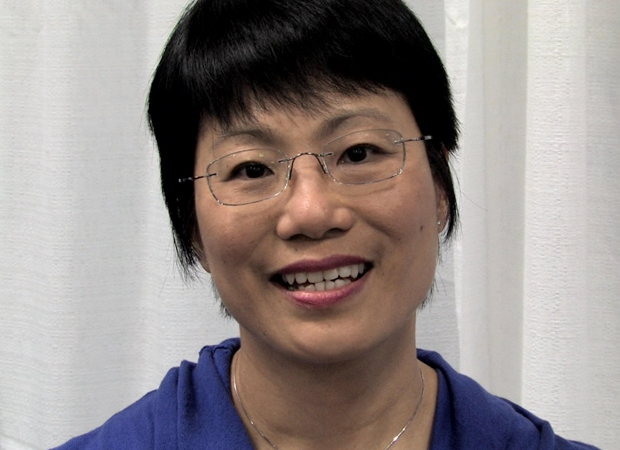
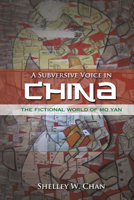
A Subversive Voice in China
Mo Yan, the most prolific writer in present-day China as well as one of its most prominent avant-gardists, is an author whose literary works have enjoyed an enormous readership and have caught much critical attention not only in mainland China, Hong Kong, and Taiwan but also in many other countries around the world. This book provides the most comprehensive exposition of Mo Yan’s fiction in any language. Author Shelley Chan delves into Mo Yan’s entire collection of literary works, considering novels as well as short stories and novellas. In this analysis, Mo Yan’s works are dealt with in a diachronic fashion––Chan discusses the development of Mo Yan’s style throughout his career by considering themes that he has addressed in a variety of narratives over time. This provides the reader with valuable insight into understanding how individual narratives fit into the entire collection of Mo Yan’s body of literary work. Scholars will also welcome the book’s extensive reference to secondary scholarship and theory, which not only skillfully deals with the Chinese scholarship on Mo Yan but also thoroughly covers the English-language sources. This book on one of the most important figures in contemporary Chinese literary history will be a landmark resource for scholars in Asian studies, cultural studies, and literary criticism, as well as an enticing read for people interested in Chinese literature and historical fiction. —Cambria Press
Books
12.10.10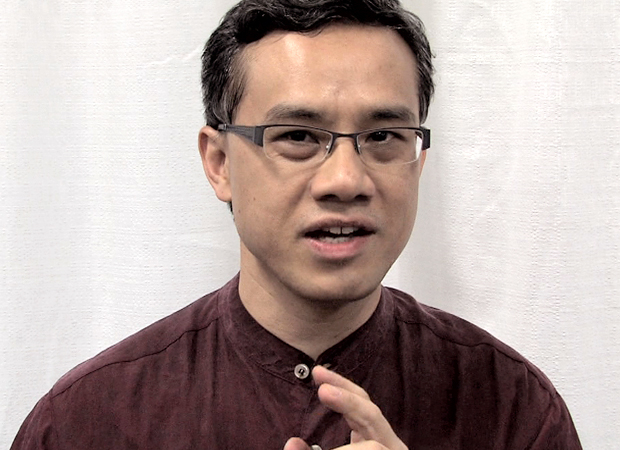
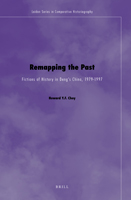
Remapping the Past
The most prominent literary phenomenon in the 1980s and 1990s in China, historical fiction, has never been systematically surveyed in Anglophone scholarship. This is the first investigation into how, by rewriting the past, writers of Deng Xiaoping’s reform era undermined the grand narrative of official history. It showcases fictions of history by eleven native Chinese, Muslim and Tibetan authors. The four chapters are organized in terms of spatial schemes of fictional historiography, namely, regional histories and family romances, discourses on diaspora and myths of minorities, nostalgia for the hometown in the country and the city, as well as the bodily text and the textual body, thus broadly covering the eternal themes of memory, language, food, sex, and violence in historical writing. —Brill
Books
12.01.10
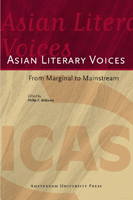
Asian Literary Voices
The essays in this collection give voice to a wide range of artists and writers from China, Japan, Korea, and India who to this day remain largely unknown or poorly understood in literary circles around the world. Contributors from Asia, Europe, and the United States cover a wide range of topics from a vast expanse of time, from Sanskrit poetry dating back over a thousand years to Chinese fiction of the twenty-first century. —University of Chicago Press
Books
12.01.10
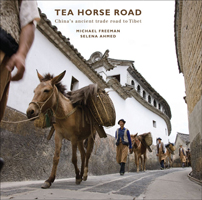
Tea Horse Road
One of the longest and most dramatic trade routes of the ancient world, the Tea Horse Road carried a crucial exchange for 13 centuries between China and Tibet. China needed war horses to protect its northern frontier, and Tibet could supply them. When the Tibetans discovered tea in the 7th century, it became a staple of their diet, but its origins are in southwest China, and they had to trade for it. The result was a network of trails covering more than 3,000 kilometres through forests, gorges and high passes onto the Himalayan plateaus, traversed by horse, mule and yak caravans, and human porters. It linked cultures, economies and political ambitions, and lasted until the middle of the 20th century. Re-tracing the many branches of the Road, photographer and writer Michael Freeman spent two years compiling this remarkable visual record, from the tea mountains of southern Yunnan and Sichuan to Tibet and beyond. Collaborating on this fascinating account, ethnobotanist Selena Ahmed’s description of tea and bio-cultural diversity in the region draws on her original doctoral research.—River Books
Books
11.01.10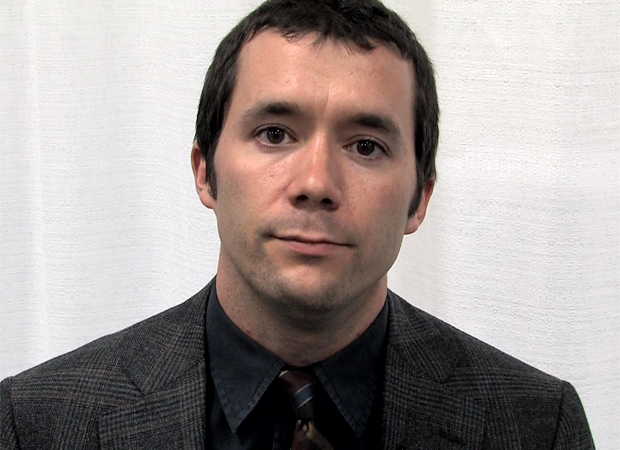
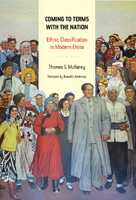
Coming to Terms with the Nation
China is a vast nation comprised of hundreds of distinct ethnic communities, each with its own language, history, and culture. Today the government of China recognizes just 56 ethnic nationalities, or minzu, as groups entitled to representation. This controversial new book recounts the history of the most sweeping attempt to sort and categorize the nation's enormous population: the 1954 Ethnic Classification project (minzu shibie). Thomas S. Mullaney draws on recently declassified material and extensive oral histories to describe how the communist government, in power less than a decade, launched this process in ethnically diverse Yunnan. Mullaney shows how the government drew on Republican-era scholarship for conceptual and methodological inspiration as it developed a strategy for identifying minzu and how non-Party-member Chinese ethnologists produced a “scientific” survey that would become the basis for a policy on nationalities. —University of California Press
Books
11.01.10
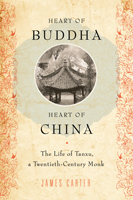
Heart of Buddha, Heart of China
The Buddhist monk Tanxu surmounted extraordinary obstacles—poverty, wars, famine, and foreign occupation—to become one of the most prominent monks in China, founding numerous temples and schools, and attracting crowds of students and disciples wherever he went. Now, in Heart of Buddha, Heart of China, James Carter draws on untapped archival materials to provide a book that is part travelogue, part history, and part biography of this remarkable man. This revealing biography shows a Chinese man, neither an intellectual nor a peasant, trying to reconcile his desire for a bold and activist Chinese nationalism with his own belief in China's cultural and social traditions, especially Buddhism. As it follows Tanxu's extraordinary life, the book also illuminates the pivotal events in China's modern history, showing how one individual experienced the fall of China's last empire, its descent into occupation and civil war, and its eventual birth as modern nation. Indeed, Tanxu lived in a time of almost constant warfare—from the Sino-Japanese War of 1895, to the Boxer Uprising, the Russo-Japanese War, the Japanese occupation, and World War II. He and his followers were robbed by river pirates, and waylaid by bandits on the road. Caught in the struggle between nationalist and communist forces, Tanxu finally sought refuge in the British colony of Hong Kong. At the time of his death, at the age of 89, he was revered as "Master Tanxu," one of Hong Kong's leading religious figures. Capturing all this in a magnificent portrait, Carter gives first-person immediacy to one of the most turbulent periods in Chinese history. —Oxford University Press
Books
10.01.10
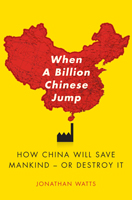
When a Billion Chinese Jump
As a young child, Jonathan Watts believed if everyone in China jumped at the same time, the earth would be shaken off its axis, annihilating mankind. Now, more than thirty years later, as a correspondent for The Guardian in Beijing, he has discovered it is not only foolish little boys who dread a planet-shaking leap by the world's most populous nation. When a Billion Chinese Jump is a road journey into the future of our species. Traveling from the mountains of Tibet to the deserts of Inner Mongolia via the Silk Road, tiger farms, cancer villages, weather-modifying bases, and eco-cities, Watts chronicles the environmental impact of economic growth with a series of gripping stories from the country on the front line of global development. He talks to nomads and philosophers, entrepreneurs and scientists, rural farmers and urban consumers, examining how individuals are trying to adapt to one of the most spectacular bursts of change in human history, then poses a question that will affect all of our lives: Can China find a new way forward or is this giant nation doomed to magnify the mistakes that have already taken humanity to the brink of disaster? —Simon & Schuster
Books
09.15.10
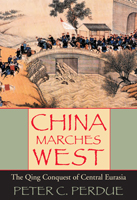
China Marches West
From about 1600 to 1800, the Qing empire of China expanded to unprecedented size. Through astute diplomacy, economic investment, and a series of ambitious military campaigns into the heart of Central Eurasia, the Manchu rulers defeated the Zunghar Mongols, and brought all of modern Xinjiang and Mongolia under their control, while gaining dominant influence in Tibet. The China we know is a product of these vast conquests. Peter C. Perdue chronicles this little-known story of China’s expansion into the northwestern frontier. Unlike previous Chinese dynasties, the Qing achieved lasting domination over the eastern half of the Eurasian continent. Rulers used forcible repression when faced with resistance, but also aimed to win over subject peoples by peaceful means. They invested heavily in the economic and administrative development of the frontier, promoted trade networks, and adapted ceremonies to the distinct regional cultures. Perdue thus illuminates how China came to rule Central Eurasia and how it justifies that control, what holds the Chinese nation together, and how its relations with the Islamic world and Mongolia developed. He offers valuable comparisons to other colonial empires and discusses the legacy left by China’s frontier expansion. The Beijing government today faces unrest on its frontiers from peoples who reject its autocratic rule. At the same time, China has launched an ambitious development program in its interior that in many ways echoes the old Qing policies. —Harvard University Press



